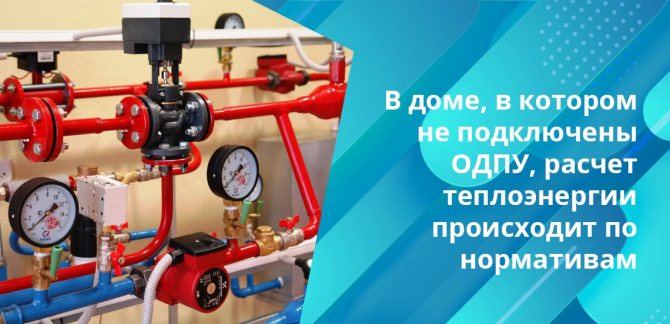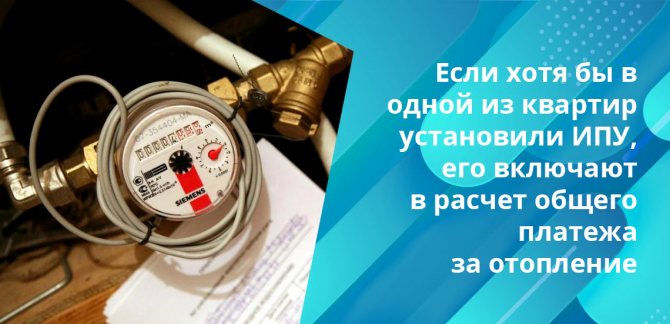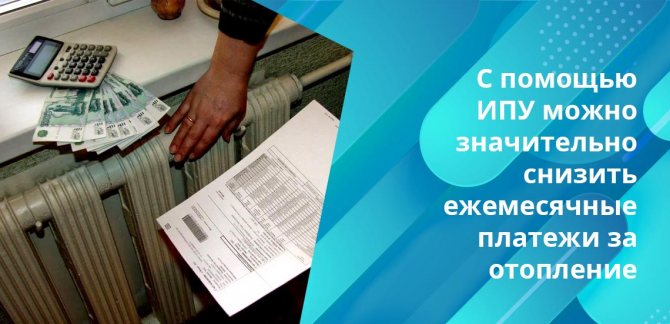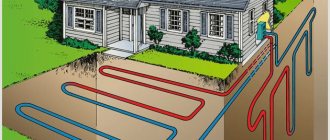Changes in 2019 that affected heating
When calculating heating payments in apartment buildings, some parameters have changed:
- There were two heating options, it was divided into 2 categories: individual and communal.
- We have developed special formulas for calculating those square meters and rooms that are not heated, and for residential areas with autonomous heating.
- Individual calculation of heating payments has appeared in multi-apartment buildings, which are only partially equipped with heat meters.
Also, for a more detailed calculation, new indicators were introduced that affect the amount of payment. Such as the area of common areas and the amount of Gcal of heat consumed. This value is the sum of the indicators that were taken from individual heat metering equipment or installed on the heating systems of the owners of radiator distributors.
Remember
Management organizations that provide heat supply utilities must take into account that:
Calculation of heating fees in an apartment building from January 1, 2019 must be carried out in accordance with the requirements of RF Regulation No. 1708.
All court decisions on issues of payment for heating that do not coincide with the conclusions of No. 46-P will be reviewed at the will of the interested parties.
If the owner has reconstructed the apartment by installing autonomous heating and received all permits, then he is charged only for the thermal energy supplied to the house for the maintenance of the common property.
How to calculate the amount yourself
You can calculate the amount of payment for heating in your apartment yourself. But before that, consider some factors:
- Determine how many months a year the payment for heat occurs. Only for the period when hot water is supplied to the batteries or throughout the calendar year.
- Find out if your apartment building has a communal heat meter installed.
- Find out whether your living space is equipped with a separate heat meter or its own radiator distributors.
- Determine how the heating system in your living space is filled with hot water. Via the central city system or through special equipment installed in your home.
Based on these parameters, you can use certain formulas to calculate payments for heating an apartment.
How to calculate the heating payment for your apartment?
Having received receipts for utility bills, many had questions about calculating the amount of heating fees, because the amounts billed for payment according to the new payment rules turned out to be quite impressive.
In addition, in addition to the usual heating in the apartment, an additional line has appeared - heating ONE. Let's figure out how this should be calculated.
In accordance with paragraph 40 of the rules for calculating the amount of fees for utility services, approved by Decree of the Government of the Russian Federation dated May 6, 2011 No. 354 “On the provision of utility services to owners and users of premises in apartment buildings and residential buildings” (hereinafter referred to as the Rules), fees for any utility services, including heating, should be divided into two components: payment for utility services provided in a residential area, and payment for utility services provided for general house needs. Accordingly, in the invoices for payment of housing and communal services you will have not one, but two lines for payment for this service.
The procedure for calculating the heating fee for your apartment will depend on the method of equipping the residential building and the premises in it with heating meters.
The following options are available for equipping a residential building with metering devices, on which the calculation depends:
— The house has a communal heating meter installed; there are no individual metering devices in apartments and non-residential premises. — The house is equipped with a common house heating meter, all or part of the premises are equipped with individual heating meters. — The house does not have a communal heating meter. So, first of all, we will find out whether the house has a common metering device, and whether there are individual metering devices for heating in residential and non-residential premises.
Example
The house is equipped with a common house heating meter; there are no individual heating meters in residential or non-residential premises.
We make calculations based on two positions:
heating provided in a residential premises (apartment) heating provided for general house needs (heating for one residential building)
The calculation of the amount of payment for heating provided in the apartment is made according to formula No. 3 of the Rules, based on the readings of the common building meter, the total area of the house and the area of your apartment.
- the volume of thermal energy provided for heating needs according to the readings of the common house meter for the month amounted to 250 gigacalories (the amount of heating volume according to the readings of the common house meter can be found out from the management company or can be seen in the payment receipt), - the total area of the house, it includes the area of residential premises (apartments), the area of non-residential premises (shops, offices and other premises located in the house), the area of premises that are part of the common property of an apartment building (entrances, basements, attics, etc.) is 7,000 square meters ( the total area of the house can be found out from the management company or can be found in the payment receipt), - the area of your apartment is 75 square meters (the area of your apartment is indicated in the certificate of registration of ownership, technical passport of the apartment or in the rental agreement), - tariff for thermal energy (heating) is set at 1,400 rubles per 1 gigacalorie (the tariff for thermal energy is set by the authorized bodies of the constituent entities of the Russian Federation - price and tariff departments, for example, the value for your region and supplier can be found in the management company or can be found in the payment receipt) . The heating fee for your apartment should be calculated as follows:
250 x 75 / 7,000 x 1,400 = 3,750 rubles
Then, we calculate the second component of the heating fee - heating provided for general house needs, which in this case is calculated using two formulas No. 14 and No. 10.
Formula No. 14 calculates the volume of service, and formula No. 10 calculates the heating fee in rubles, but everything is in order.
To calculate the volume of heating provided for general house needs, you need to find out one more component of the formulas - the area of residential and non-residential premises, that is, the area of all apartments and non-residential premises (shops, offices) located in the house (the area of residential and non-residential premises of your house can be found at the management company or look at the payment receipt). Let's say this area in this case will be 6,000 square meters.
Then the calculation of the volume of thermal energy will be carried out as follows:
250 x (1 – 6,000 / 7,000) x 75 / 6,000 = 0.446428571 gigacalories
In order to calculate the cost of payment in rubles, we multiply the resulting volume by the tariff established for thermal energy.
0.446428571 x 1,400 = 625 rubles
As a result of the calculations obtained, the full payment for heating for your apartment will be:
3,750 + 625 = 4,375 rubles.
What are the rules for calculating payments for heat?
Be guided by the parameters that you have defined for your home and use the ready-made formula to calculate by category:
- When there is no common house heat meter (DHMU), and payments for heat supply are charged only during the months of the heating season.
- If there is no general income tax, and payments are extended over the entire calendar year.
- The house is connected to an ODPU, but separate meters are not installed in any of the premises of the building.
- The building has an ODPU installed, the apartments are partially equipped with separate devices for calculating heat energy.
If your apartment is located in a building in which ODPU are not connected, and the payment is assigned only during the heating period, the heat energy is calculated according to the standards. This is a fixed amount of energy that is required to heat 1 square meter. meters for 30 days. Standards vary depending on the region; they are adopted and approved by local leadership, taking into account climatic conditions. In this case, you can use the following formula:
P = Plz x Np x Tt
Plzh - housing area. NP - consumption standard. Тт —heat tariff.
For buildings without DPPU, in which payments are spread over 12 months, the calculation includes the coefficient of frequency of payment for utilities for heat energy. The coefficient is equal to the number of payments for the heating season divided by 12 months. And the calculation will be made according to the following formula:
P = Pl x Np x Kf x Tt
Where Kf is the calculated coefficient for monthly accounting.

What determines the size of heating payments in apartment buildings?
Payment for heating services is determined depending on the presence or absence in a particular house of a common house (collective) device for metering the resource consumed. In both options, a fairly simple formula is used to calculate the monthly payment, which involves multiplying three important indicators.
For houses without a collective metering device, the formula will multiply such indicators as: the total area of the premises (sq.m) , the rate of consumption of thermal energy spent on heating the apartment for the previous period (Gcal/sq.m) and the tariff established by law for consumed thermal energy (rub ./Gcal). Therefore, the last 2 indicators are taken as average.
In the case of calculating heating fees when a common house meter is installed, instead of the second indicator (consumption norm), the indicator of the average volume of energy consumption per square meter of common house area for the month obtained over the past period is used.
Therefore, in order to calculate consumption, you need to find out what indicators will be used for a particular case, depending on the existing equipment in the house.
As for the number of radiators in a certain residential premises, their number is established by generally established building rules and regulations, depending on the area of the room, the number of windows placed in it and other conditions. According to the law, the management company maintains strict control over the common property, which includes sections of batteries installed directly in the apartment, as well as the in-house heating system itself, including risers, heating elements, metering devices and its other components.
That is, in order to make changes to this system, for example, “adding sections”, it is necessary to obtain permission for its reconstruction, pay all state fees and fully put the system into operation.
But in reality, in most cases, apartment owners independently increase the number of battery sections without drawing up the necessary projects for this and do not coordinate this with anyone. Of course, no one will check door-to-door, but if such discrepancies are identified, penalties may be applied to the homeowner.
The standards for calculating payment for consumed thermal energy are given in the “Rules for the provision of utility services” No. 354 of 2012.
The definition of common property and the rules for its maintenance are established by Decree of the Government of the Russian Federation No. 491 of 2006.
Additional calculation formulas
Meters for calculating heat energy in an apartment building are installed upstream of the building. The device shows how much heat is supplied to the apartments of the entire building. Heat is calculated proportionally for all apartments. The calculation is carried out as follows:
P = (Rebt + (Plzh x (Ot - ∑Rebt)) / Plob) x Tt
Plzh is the area of the apartment. Floor area - the total area of residential and non-residential premises in a building. From - the volume of heat energy according to the ODPU readings when paid during the heating period or according to the average heat energy indicator by month for the previous year. Tt is the tariff set for heat energy. Total - the volume of heat that is needed to heat the entire living space. ∑Tot is the volume of all heat energy consumed in residential and non-residential premises of a high-rise building.
To calculate the Obt indicator, you also need a formula:
Obt = Plz x (From / (Plob - Plind + Ploi))
Ploi - the area of those premises that are for common use. Plind is the area of residential and non-residential rooms in which there are no heating devices or their own heaters are installed.
The calculation is carried out according to the following formula:
∑Obt: From/ (Plob + Ploi) x Plob
If in one residential building an individual metering device (IMU) is installed in at least one of the apartments, it is included in the calculation of the total payment for heating. To calculate payments in houses where IPU is installed in several apartments, the same formula is used as for houses with ODPU, but without IPU.
For those premises in which there is no IPU, the Obt indicator is calculated as follows:
Obt = Plzh x (∑ObtIPU / ∑PlzhIPU)
∑ObtIPU - the total amount according to the indications of the IPU, if the calculation and accrual of payment occurs during the heating season. Or by the average monthly heat volume for the previous year. ∑PlzhIPU - area of all rooms with IPU.
It’s not easy to count the first time, but even the second time, it becomes clear what indicator and what meter readings should be inserted where
How to calculate your heat payment?
The instructions for calculating payment (Gcal for heating) include three options depending on whether there are meters and whether there is a common house meter. Let's consider all the possibilities:
There are no meters installed in the apartments, there is a common building meter
- The management company checks the readings of the common house appliance. For example: 250 gigacalories. Find this value on your receipt;
- Find out the total area of the house including offices, shops, etc. For example, 7000 m;
- Find out your energy tariff. For example, 1400 rubles per 1 Gcal;
- Taking into account the area of the apartment, calculate your individual fee. If the area, for example, is 75 meters, then the following calculation will be obtained: 250 x 75. The result obtained is divided by 7,000 x 1,400 - general house expenses. Result: 3,750 rubles. This will be the amount you see on your receipt.
The house does not have a common appliance and there are no individual meters
In this case, the calculation is carried out taking into account the heating rate. For example, it is equal to 0.25 Gcal per square meter. Multiply it by the area of the heated room and the tariff accepted in your region. To this value is added the fee for general house energy according to the standard, divided among all owners in full.
What temperature should be maintained in apartments?
Heating standards in apartment buildings during the cold season:
| Room type | Optimal temperature in degrees Celsius | Permissible temperature in degrees Celsius |
| Living room | 20-22 | 18-24 |
| Living room in regions with an outside temperature of -31°C or lower | 21-23 | 20-24 |
| Kitchen | 19-21 | 18-26 |
| Corridor between apartments | 18-20 | 16-22 |
| Toilet | 19-21 | 18-26 |
| Bathroom | 24-26 | 18-26 |
| Lobby, landing | 16-18 | 14-20 |
| Pantry | 16-18 | 12-22 |
In the warm season, the norm for living rooms is optimally 22-25°C, and acceptable - 20-28°C.

If the temperature in your apartment during the heating season does not meet the established standards, you can contact the service company or utility service. They are required to investigate and obtain evidence. In this case, heating payments will be reduced. But such a solution can be called a half-measure, and it will suit few people, because the apartment will still remain uncomfortable living conditions.
How to reduce payments
To reduce the amount of monthly payments for heat, the only way is to install individual heat meters. But before that, you may encounter several problems:
- Obtaining permission to install an IPU is a time-consuming process. In order for the installation to be approved, the technical specifications must be confirmed or improved. Based on them, the appropriate type of meter is selected.
- To regularly pay for heating using an individual meter, you need to send meters for verification in a timely manner. To carry it out, the meter is dismantled and reinstalled, which entails additional costs. If the verification takes place during the heating season, then payment for heating the apartment for a time without IPU is carried out according to the established standard. Therefore, it is better to return meters in the summer, although there may be long queues at this time.
- Expensive installation of IPU. Payment for the installation of one meter can reach 25 thousand rubles. Some companies charge a separate fee for dismantling. In addition, verification is also paid. And if the meter does not pass verification by the technical service or breaks down, it must be replaced in a timely manner.

Despite the complexity and large investment during initial installation, using a custom appliance can significantly reduce your monthly heating bills.
Every man for himself: Allowed to pay for heating using an individual meter
0:10
Skip
Heating bills may be reduced significantly. The Constitutional Court of Russia sided with the residents of apartment buildings. Who will this affect?
If it’s cold, we turn it on more, if it’s warm, then, accordingly, less.
There has been no point in regulating the heat supply for the last couple of years. Although when buying an apartment in a new building, Kirill Krasyuk was promised that you would pay according to an individual meter. In 2020, the law changed, they began to charge according to the common house tax.
Kirill Krasyuk, resident of the new building:
The payment differs by 4 times; we actually pay 400% more for the common house fee.
And all because the neighbors don’t have such meters. Everyone should have individual appliances in their home, only then will gigacalories begin to be counted apartment by apartment. But how can this be done now, if during construction the main condition for saving was ignored?
It is sometimes physically impossible to install meters after the house is completed. New residents often do not live in new buildings; they rent out their living space or put it up for sale. So on Kirill’s site, only half of the 9 apartments are occupied.
And so almost everywhere. Up to 20 houses are rented out in Ulan-Ude per year. And he takes THC from everyone according to the standard. But now it seems the situation has changed. Residents were allowed not to overpay for their neighbors. This was done by the Constitutional Court of Russia. On July 10, he made an unprecedented decision. Satisfied the claim of a resident of the Moscow region for the right to pay using an individual meter, regardless of whether other residents have the same one or not.
Irina Akhandaeva, deputy head of the republican service of Gosstroyzhilnadzor:
Citizens paid money for the installation of this meter, carry out the inspection in a timely manner, and this is also a paid procedure, and cannot use the readings of these meters in calculations - not a very good phenomenon, and indeed, the Constitutional Court dotted all the i’s.
Residents of new buildings without meters will now have to pay more, according to the standard. Or get your own devices. However, new residents will not immediately feel financial changes either. In Buryatia we pay for heat both in winter and in summer, the payment will be for 12 months.
Victor Nadezhin, expert of the public control group in the field of housing and communal services and economics of the Public Chamber of the Republic of Buryatia:
Indications should not be taken this way - you consumed so many gigacalories this month, you will pay for that much plus ONE. Residents will pay according to the average for the previous year, and at the end of the year, usually the 1st quarter of the next year, an adjustment is made.
This difference in payment must be returned to residents. Energy companies must recalculate new residents for the previous 2 years. The case when the law has retroactive effect. And if public utilities resist, lawyers advise turning to Themis for help. After all, the decision of the Constitutional Court of Russia is not subject to appeal.
Svetlana Semirenko, Alexander Namzhilon, Victor Nimaev
external photo: pixabay.com
The essence of the work of the IPU
An individual meter, which is connected to the heating system, takes into account heat energy consumption in the form of calculating the difference between the temperature achieved in the room and the coolant flow rate. Before installing IPU in your apartment, determine which heating system wiring in your high-rise building is vertical or horizontal.
The meters are attached directly to the heat supply pipe. If you have a vertical distribution system in a high-rise building, you will have to install one metering device for each pipe, and this is a very expensive undertaking. Each room will require a separate meter. There is no such problem with a horizontal system; only one device is enough. If the heating system is a riser system, distributors can be installed on the radiators. They calculate coolant flow by calculating the temperature difference in the room and from the surface of the radiator.
As a rule, high-rise buildings built after 2000 have a horizontal heating system. Therefore, it will be cheaper to install an IPU in a new building than in Soviet-built apartments. After installing the meter, the craftsmen seal it to prevent fraudulent activities on the part of residents or tenants.
Find out also how to save on electricity and pay utilities without commission.
about the author
Klavdiya Treskova - higher education with qualification “Economist”, with specializations “Economics and Management” and “Computer Technologies” at PSU. She worked in a bank in positions from operator to acting. Head of the Department for servicing private and corporate clients. Every year she successfully passed certifications, education and training in banking services. Total work experience in the bank is more than 15 years. [email protected]
Is this article useful? Not really
Help us find out how much this article helped you. If something is missing or the information is not accurate, please report it below in the comments or write to us by email
Comments: 0
Your comment (question) If you have questions about this article, you can tell us. Our team consists of only experienced experts and specialists with specialized education. We will try to help you in this topic:
Author of the article: Klavdiya Treskova
Consultant, author Popovich Anna
Financial author Olga Pikhotskaya











